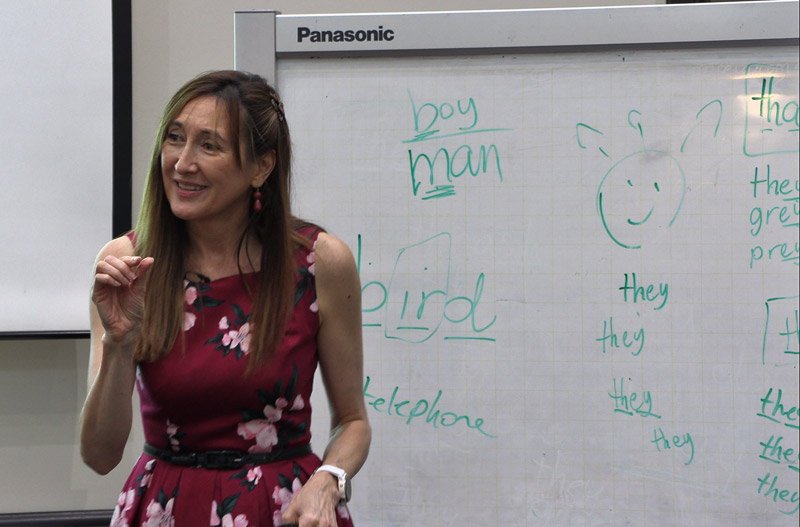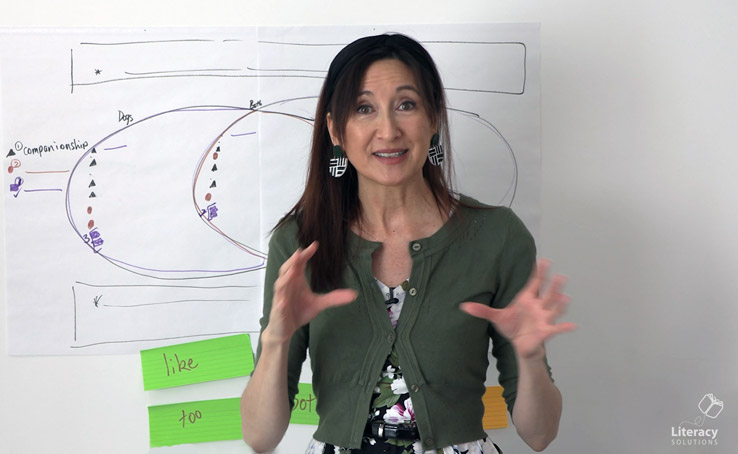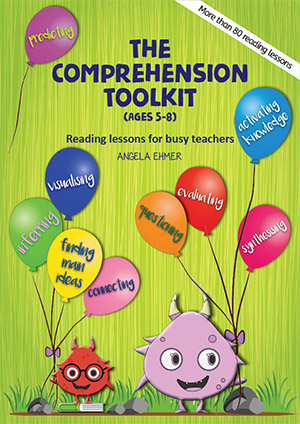Guided Reading Q & A
My recent post, “Round Robin Reading/Guided Reading – Is there a difference?” prompted great interest and many queries. Some of the more frequently asked questions about Guided Reading are outlined below.
-
Q: What can the students who finish early do whilst waiting for other students to finish?
A: There are no hard and fast rules and we must respond according to our knowledge of individuals within groups and the challenges within texts.
Fast finishers should be encouraged to re-read the text alone in order to clarify, consolidate or extend understandings and build fluency. There is more to reading than being a good word caller and we know that the fast finishers must need strategic support on the guided reading text as this is what guided us to select it. With each read, fluency should improve and students must know how the reading should sound, i.e. If I am listening to you, this is what we would expect to hear from one read to the next. Explicitly teach for the prosodic elements (pitch, tone, stress and volume) and model, share and support students to rehearse known texts, building understandings about how fluency and prosody drive meaning.
A pre-reading discussion may occur and from this, students may be asked to be ready to discuss something from the reading and therefore may make a few notes during and after reading. For example, good readers know that reading is about gaining meaning. Be ready to talk about any words, groups of words or ideas that you don’t fully understand. Students may jot a few things down so that they are ready for the discussion.
Revisiting the text is likely to occur for early finishers if they are to be well positioned to participate in these discussions, as good readers often re-read and think about the word, group of words or idea differently when attempting to comprehend. A reading journal or something similar may be helpful to prompt for thinking during guided reading. Bear in mind though, that the purpose is to support active problem solving and students should spend the bulk of the time during guided reading, actually reading and discussing texts and not completing formal or lengthy written tasks. -
Q: Does each student need their own copy of the book?
A: Yes. Active problem solving by all group members cannot occur when some students do not control their text. -
Q: Does the silent or whisper reading model suggest that there is no place in guided reading for reading aloud by students?
A: Not at all. Revisiting the text allows teachers to focus on teaching points identified during reading. Depending on the purpose, teachers may instruct students to read aloud alone, buddy read, choral read or echo read the text or sections of the text. It is important to clarify the purpose of the re-read so that students understand the goal and what they are trying to achieve while re-reading. -
Q: How do I know students are really reading during guided reading if I cannot hear them all at once?
A: Students quickly understand that opting out during guided reading is not an option. High levels of student participation are essential and expected. We will ensure that students opt in by actively engaging them in conversations about the text. -
Q: I do guided reading with my whole class at once. Is this guided reading?
A: No. Guided reading only occurs with students of similar ability. -
Q: What is the optimal group size in guided reading?
A: A good number enables high levels of participation by all group members. Avoid groups which are too small as the dynamic can be a little flat and avoid groups too large as participation is lessened for each student. Groups of four to six are usually optimal. -
Q: What do the students not doing guided reading do while I take the guided reading group?
A: These students are participating in independent learning tasks, linked to the reading of texts, which help them to practise their reading skills and knowledge. During independent learning we want to see transference and generalisation of what has been taught during explicit teaching episodes and that we have coached for during guided reading. Independent application of strategic problem solving (both word solving and comprehension), without the coaching which occurs in guided reading, is the goal. -
Q: I have an hour of teachers’ aide time allocated during guided reading as part of our school’s intervention program. Should she take guided reading to give the bottom group extra lessons?
A: Providing additional guided reading for harder to teach students is vital. The teacher should take the harder to teach students and give the other groups to other helpers. We need our hardest to teach students working with the most qualified person in the room.
To sum up . . .
The purpose of guided reading is to encourage and support active problem solving on texts which provide enough challenges, but not so many that the reading process erodes. This is an opportunity for students to apply strategic actions learned to an independently read text and for teachers to support this strategic problem solving. The expert assistance of the teacher is to coach students to transfer and generalise problem solving actions which have been explicitly taught, to the text being read.
Therefore, guided reading texts should be carefully selected for the problem solving opportunities they present. We’re looking at around six to ten elements to solve per one hundred words, remembering that strategic activity for word solving and comprehension is required.
Text choice is based around group needs as well as other important considerations such as what students know and the pertinence of the text to readers within the group.
Guided reading is an opportunity for students to apply the skills and knowledge acquired as a result of the teachers’ rigorous teaching of problem solving actions. Transference of knowledge from setting to setting and generalisation of problem solving activity across texts and text types, vocabulary, ideas and text structures can be challenging for students. This is why it is imperative that challenges within the text are identified and suitable supports provided.
Success in any guided reading episode will rely on that teacher’s ability to apply knowledge of the reading process as it relates to a particular group of students and these students’ abilities to apply strategic actions to decode and comprehend texts. The teacher’s ability to identify challenges within texts and provide strategic supports, to a lessening degree over time, is critical to shifting the locus of control from adult to student.
We look at implementing a successful guided reading program in greater detail in The P-3 Reading Workshop. (Brisbane 20 October 2010)





Angela,
As the Literacy Lead teacher at the school I am working in, I am happy to say that after 3 years in this position the teachers now do Guided Reading correctly. Initially, teachers were doing round robin reading and calling that Guided Reading. It is a slow process to get teachers on board but when they are there it is a great achievement for all. I think there has been a lack of understanding how it is done and why it is done and it is up to us all to be professional and ensure we are doing right by the children we teach. Thank you for your article and it seems from you following up this month with more about GR versus RR Reading, that there is much confusion everywhere. Articles like yours are terrific to pass on to those colleagues that need to work on their teaching strategies.
Lisa
Thank you. There are many clarified points in this Q&A. I will share them with my colleagues to refresh their perspectives especially the fact that the teacher should be helping those hardest to teach students. This of course doesn’t mean you don’t work with the other groups as well. It just means you work with those particular students more often if you are able, I think teachers sometimes forget this.
What s great little article! Always interested in other’s views and how they combat problems or difficulties. I actually give my group a small pad (only 1/4 A4 size) so there isn’t any threat about writing too much. When they finish, I set a little activity write 5 of your favourite words and 1 you didn’t know, then draw a cartoon or sketch of a particular part i.e. setting, character, part of story etc or in non-fiction i.e. sketch the animal showing characteristics or part of the habitat where you would locate the young, or mother/baby act starting with specfified animal in the text. Endless short tasks could be asked. Sometimes I allow first child finished to set the task, they usually choose a drawing or labelling activity. Even my yr 6 boys after reading Dear Sam, Dear Ben had to write their own P.P.P.P.S.telling of a reason why the letter wasn’t posted on time. They tried to outdo themselves in “way out” answers but heaps of learning and fun. Also get each student to write an interesting word on board and discuss or make it with magnetic letters ( even Yr 7s love to do that) We spend a few minutes talking about each word and T. stresses how we get to this word the erasiest in this passage after students have given their ideas. Students freely participate and seem to like their little pads which they can easily hide or disclose as they like.
Thanks for the great article Angela. I have a year 1 class and run reading groups for 1 hour twice a week. I have 6 reading ability groups with 4,5 or 6 students in each. What I do is I have 6 different activities in which the children rotate in their group over the 2 days. The activities include a grammar sheet which is focused on a grammar rule that we have worked on the week before, a literacy game, computer literacy game (I often use Roy the Zebra which is a UK internet literacy based games-Fantastic), free writing (or I give them a topic based on the text type we are studying), comprehension activities (a worksheet/booklet) made up to go with the reader we are focusing on in their guided reading session. These are often the fitzroy readers which come with ready made booklets for each book) and of course guided reading. I take the guided reading group and the children work independently on the other activities. I have 1-2 parent helpers aswell. I have found this method to be very effective in implementing guided reading. I spend about 20 minutes with each group and the rest of the class know that they have to work quietly. Setting up rules and being firm from the beginning is really important for this to work. After 20 minutes I ring my bell, the chn finish the activity they are working on and the move to the next. I am reaaly curious as to how other teachers fit guided reading into their program and to share other ideas.